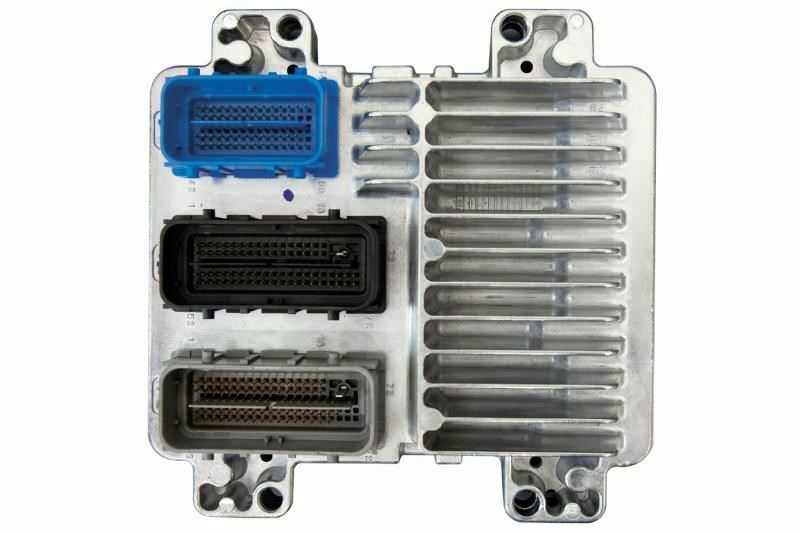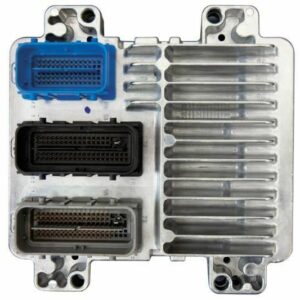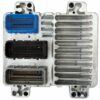Restore Your Buick’s Performance and Reliability
Is your 2009-2011 Buick Lucerne suffering from a persistent check engine light, erratic engine behavior, or a frustrating no-start condition? As a technician with over two decades of experience, I’ve seen these symptoms countless times, and they often point directly to a failing Engine Control Module (ECM). This isn’t just a part; it’s the brain of your vehicle’s engine, responsible for managing everything from fuel mixture and ignition timing to transmission shifts. When it falters, your car’s performance and dependability suffer.
We offer a dependable and straightforward solution. This Engine Control Module, part number 1263605, is a direct-fit replacement for your original unit. The best part? We handle the programming for you. Simply provide your vehicle’s VIN during checkout, and our experts will flash the module with the latest, most stable software updates from GM. This ensures seamless communication with your vehicle’s other systems, restoring factory performance without an expensive trip to the dealership for programming.
A Technician’s Notebook
I remember a 2010 Lucerne that came into the shop with a complaint of intermittent stalling at stoplights and a check engine light that would come and go. The owner had already replaced the spark plugs and a coil pack with no success. My scan tool showed a P0601 ‘Internal Control Module Memory Check Sum Error.’ While this code is a strong indicator, intermittent issues can be tricky. After verifying power and grounds to the ECM were solid, we swapped in one of our pre-programmed modules. The stalling vanished instantly, and the car ran smoothly. This case highlights how a failing 2009-2011 Lucerne Engine Control Module can mimic other component failures, making a quality, correctly programmed replacement essential for an accurate fix.
Common Signs of a Failing Lucerne ECM
If you’re experiencing any of the following, a faulty ECM could be the culprit. A failing module can cause a wide range of issues, from minor annoyances to critical failures.
- ✔ Check Engine Light is illuminated with communication or internal processor codes (e.g., P0601, P0606, U0100).
- ✔ Engine cranks but refuses to start.
- ✔ Noticeable decrease in fuel economy.
- ✔ Rough or unpredictable shifting from the automatic transmission.
- ✔ Stalling, hesitation, or rough idling.
- ✔ The vehicle fails an emissions test.
A Straightforward Guide to Installation
Installing your new 2009-2011 Lucerne Engine Control Module is a manageable job for a confident DIYer. For the Lucerne with the 4.6L V8, the ECM is located in the lower part of the air cleaner box, making access relatively easy.
- Safety First: Always disconnect the negative terminal from your vehicle’s battery and wait at least 15 minutes for the system capacitors to discharge.
- Locate the ECM: On your Lucerne, you’ll find the module attached to the bottom of the air filter housing assembly. You will need to remove the air filter cover and filter to access it.
- Disconnect Connectors: Carefully unplug the electrical harness connectors from the old module. These connectors have locking tabs that must be released before pulling. Never force them.
- Remove the Old Module: Unbolt the old ECM from its mounting bracket on the air cleaner box.
- Install the New Module: Mount your new, pre-programmed ECM in place of the old one and securely tighten the mounting bolts.
- Reconnect Everything: Plug the electrical connectors firmly into the new module until they click into place. Reinstall the air filter and cover, then reconnect the negative battery terminal.
- Final Step: Some vehicles may require a security or crankshaft position sensor relearn procedure after installation, which can be done with many professional-grade scan tools. Start the vehicle and let it idle for a few minutes to allow the systems to sync.
Will This Fit My GM Vehicle?
This module is a direct replacement for service number 1263605 and is interchangeable with part numbers 12636659, 12639300, 12628993, 12628911, 12625453, 12622175, 12630464, and 12678512. It is verified to fit the following vehicles:
- Buick Lucerne: 2009-2011 (4.6L, located at lower part of air cleaner box)
- Buick DTS: 2009-2011
- Cadillac CTS: 2009 (6.2L)
- Cadillac SRX: 2009 (4.6L)
- Cadillac STS: 2009-2010 (4.4L, 4.6L)
- Cadillac XLR: 2009 (ID 12636659 or 12625453)
- Chevrolet Colorado: 2009-2012 (2.9L, 3.7L)
- Chevrolet Corvette: 2009 (ZR1)
- Chevrolet Trailblazer: 2009 (6.0L)
- GMC Canyon: 2009-2012 (2.9L, 3.7L)
- GMC Envoy: 2009 (5.3L)
- Hummer H3: 2009-2010 (3.7L)
- Saab 9-7X: 2009
Frequently Asked Questions
Why do I need to provide my VIN?
Your VIN (Vehicle Identification Number) is essential for us to program the module with the correct software for your car’s specific options, engine, and transmission. This VIN-matching service ensures the part works correctly right out of the box.
Is this a plug-and-play part?
Yes, because we program it to your VIN, it is designed to be plug-and-play. In some cases, a simple ‘security relearn’ or ‘crankshaft variation relearn’ may be needed, which can be performed with many bidirectional scan tools or by following a specific vehicle procedure.
Will this fix my car’s check engine light?
If the check engine light is caused by an internal failure of the original ECM (common codes include P0601-P0606), then this replacement module will resolve the issue. It’s crucial to ensure your vehicle’s problem has been properly diagnosed before ordering.
What makes this better than getting one from a junkyard?
A used module from a junkyard will be programmed for the donor vehicle and will not work in your car without being reprogrammed by a dealer. Our modules are tested, cleaned, and flashed with the latest GM software for YOUR specific vehicle, saving you that step and potential compatibility headaches.
Is any other work required after installation?
After installing the module and reconnecting the battery, start the engine and let it idle for 5-10 minutes. This allows the computer to begin its learning process. As mentioned, a security or crank relearn might be necessary depending on your specific vehicle’s requirements.



